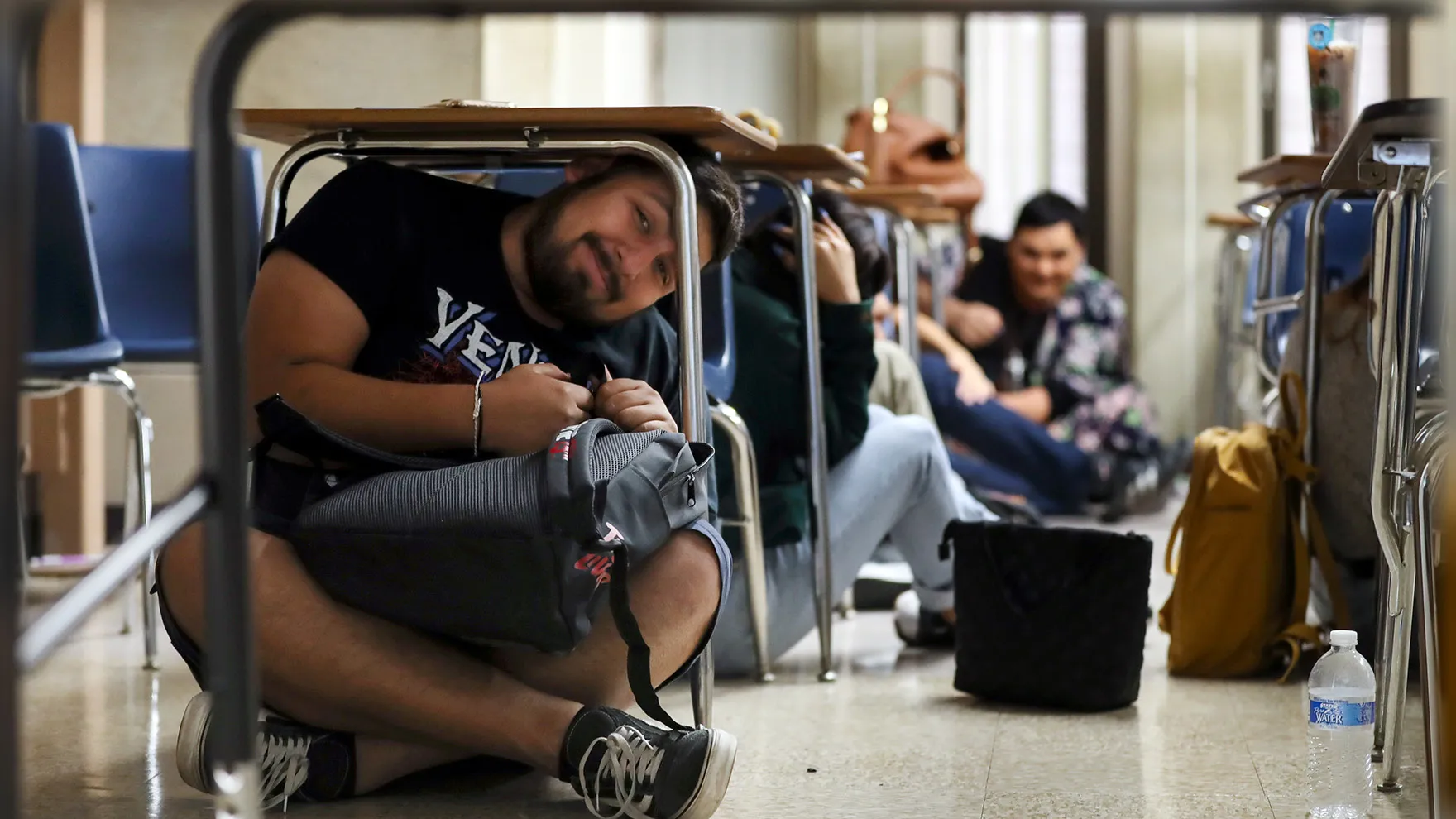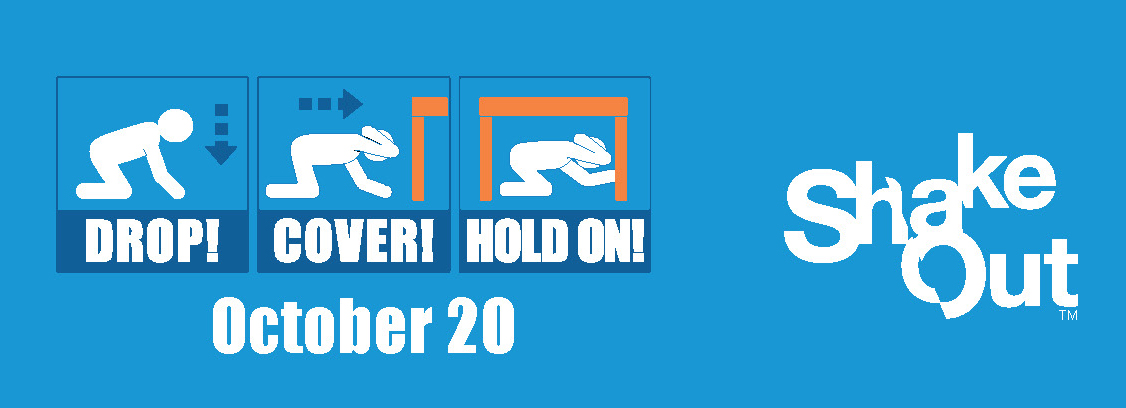Joe Gutierrez | Office of Strategic Communication | (909) 537-3007 | joeg@csusb.edu


Cal State San Bernardino and its Palm Desert Campus will join hundreds of colleges, universities and other organizations throughout the state, the country and around the world to “drop, cover and hold on” as part of the “Great ShakeOut” simulated earthquake drill on Thursday, Oct. 20 at 10:20 a.m.
More than 16.2 million people around the world are expected to participate in the Oct. 20 exercise, considered the world’s largest earthquake drill. During the self-led drill, participants practice how to “Drop, Cover, and Hold On.”
Endorsed by emergency officials and first responders, the safe response to an earthquake is to:
DROP where you are, onto your hands and knees. This position protects you from being knocked down by shaking and reduces your chance of being hit by falling or flying objects.
COVER your head and neck with one arm and hand.
- If a sturdy table or desk is nearby, crawl underneath for shelter
- If no shelter is nearby, crawl next to an interior wall
- Stay on your knees; bend over to protect vital organs
HOLD ON until the shaking stops.
- Under shelter: hold on to it with one hand; be ready to move with your shelter if it shifts
- No shelter: hold on to your head and neck with both arms and hands.
The scenario is a 7.8 magnitude earthquake on the southern San Andreas Fault – approximately 5,000 times larger than the magnitude 5.4 earthquake that shook southern California on July 29, 2008 – has hit the area. As part of the drill, CSUSB police will evacuate the Jack Brown College of Business and Public Administration and parking services will set up stops at the university entrances as if it was a real emergency. All other university classrooms, offices, departments and buildings will observe the drill.
In addition, the College of Natural Sciences’ Department of Geological Sciences will host QuakeCon, an outdoor event from 9 a.m.-1 p.m. to promote earthquake safety and preparedness and draw attention to the research activities and opportunities of department faculty, students and alumni.
QuakeCom will be held along the walkway between the Biological Sciences and Chemical Sciences buildings. The event will be hosted by “Earthquake Dude,” a.k.a. department lecturer Bryan Castillo (MS, earth and environmental sciences, ’19), an earthquake geologist and department alumnus. More information about QuakeCon is available on the event’s Coyote Connection post.
The event will feature earthquake preparedness and safety information, department faculty, representatives from the Geology Club, demonstrations of geologic faults, highlights of department research, a prize wheel, and other attractions.
Emergency officials created the ShakeOut drill, which began in California in 2008, to encourage people and organizations to be prepared in order to survive and recover when the next big earthquake happens.
The drill at CSUSB students, faculty, staff and others make them aware of what to do before, during and after an earthquake, and to be aware and prepare for any disaster.

On Wednesday, Oct. 19, the university will send out a reminder via its communication systems to students, faculty and staff that the Great ShakeOut drill will be held on Thursday, Oct. 20.
At 10:20 a.m. on Thursday, Oct. 20, the campus community will be notified via the university’s various communications systems that the campus has experienced a major earthquake. These messages will further test CSUSB’s communications channels through text messaging, voice messages, email, social media and website notices.
The messages will instruct faculty, staff and students who are inside a building to stay where they are and then “drop, cover and hold on.” People on campus who are outside will be asked to move to a clearing away from buildings, power lines or trees.
The earthquake drill also serves as a reminder for individuals to review and update their emergency preparedness plans and supplies, and to secure any furnishings, fixtures and items at home and other locations to prevent damage and injuries.
Officials estimate that an earthquake of a severe magnitude will sever local access to water, electricity, gas, fiber-optics, telecommunications, roads and railways, and that there will be extensive damage throughout the region.
In 2019, on July 4 and 5, earthquakes centered close to Ridgecrest and the nearby town of Trona shook the region. The first mainshock of 6.4 magnitude (now deemed to be a foreshock) occurred on July 4. The next day, two quakes, a 5.4 magnitude and 7.1 magnitude struck the area. The 7.1 magnitude quake, now considered the mainshock, was the most powerful earthquake to hit the state in 20 years.
The quakes serve as reminders that large earthquakes can occur with little to no warning. Citizens in the central U.S. are not immune to earthquakes – the region is home to several active seismic zones capable of producing damaging earthquakes, including the New Madrid and Wabash Valley Seismic Zones.
For more information about the Great ShakeOut, visit the Great ShakeOut website
For more information about Cal State San Bernardino’s participation in the Great ShakeOut, contact CSUSB Police Lt. John Guttierez, at John.Guttierez@csusb.edu.
Learn more about the College of Natural Sciences QuakeCon at the QuakeCon website.